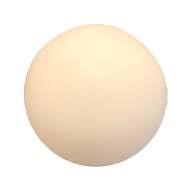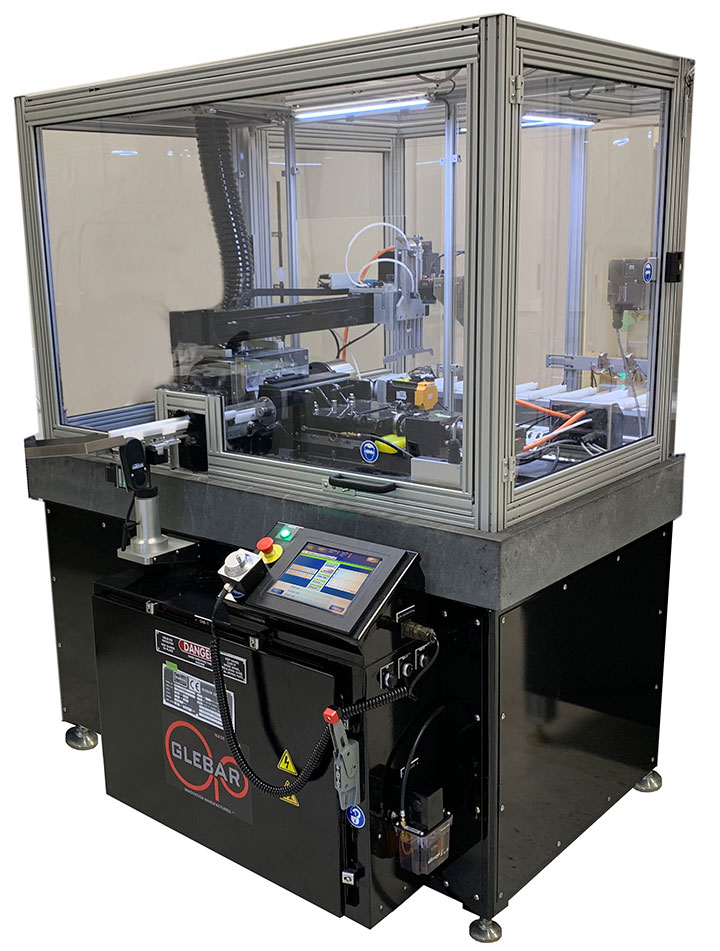
Current Process:
The balls are formed one at a time from bar stock on a lathe in multiple roughing and finishing tool paths. Molded balls are purchased from a contract manufacturer, then turned to achieve the desired diameter and to remove mold imperfections such as parting lines.
Challenges:
Purchasing the balls can be expensive, and long lead times create a need for increased inventory levels and consumption of cash. Turning can be slow and inconsistent, resulting in long cycle times, high scrap rates, and surface finishes that generally require downstream grinding or honing to meet specifications.
Solution
Solution: PG-9DHD Centerless Form Grinder
The PG-9DHD Centerless Form Grinder can grind spherical or cylindrically shaped components, yielding 5-10 parts every 40 seconds, depending on the diameter and application. The machine and process increase output, reduce costs, and improve quality.
The 10″ wide work wheel provides the highest capacity, producing multiple components per cycle while, in this application, maintaining tolerances of +/- 0.003″. Finer tolerances can be achieved depending on the material being processed.
An automatic feeding system can be positioned at the top or side of the machine depending on the application.
In recent tests, the PG-9DHD ground preformed balls and rods. Six preformed balls, measuring 1.25″ diameter, were ground in 40 seconds. Each 1.75″ diameter rod produced five balls in 3-1/2 minutes. In this application, form grinding increases output by as much as 80%.
Glebar machines can grind most hard to turn materials such as carbon fiber, fiberglass (including G10), Teflon, Santoprene, and polypropylene.
Glebar developed ball grinding for the golf industry in the 1960s using centerless grinding fundamentals. The process was adapted to grind other spherical or cylindrically shaped components.
The PG-9DHD is available with remote connectivity, gauging, automation interfacing, and precise positioning.
Explore | PG-9DHD Form Grinding Machines

PG-9DHD
The PG-9DHD Centerless Form Grinder produces multiple parts from a single piece of material, in addition to grinding pre-formed parts to finished shape with extreme precision. Examples of applications are carbon fiber components, fuse bodies, golf balls, drumsticks, felt pen nibs, check valves for pumps and valves, and insulators for electronic components.



